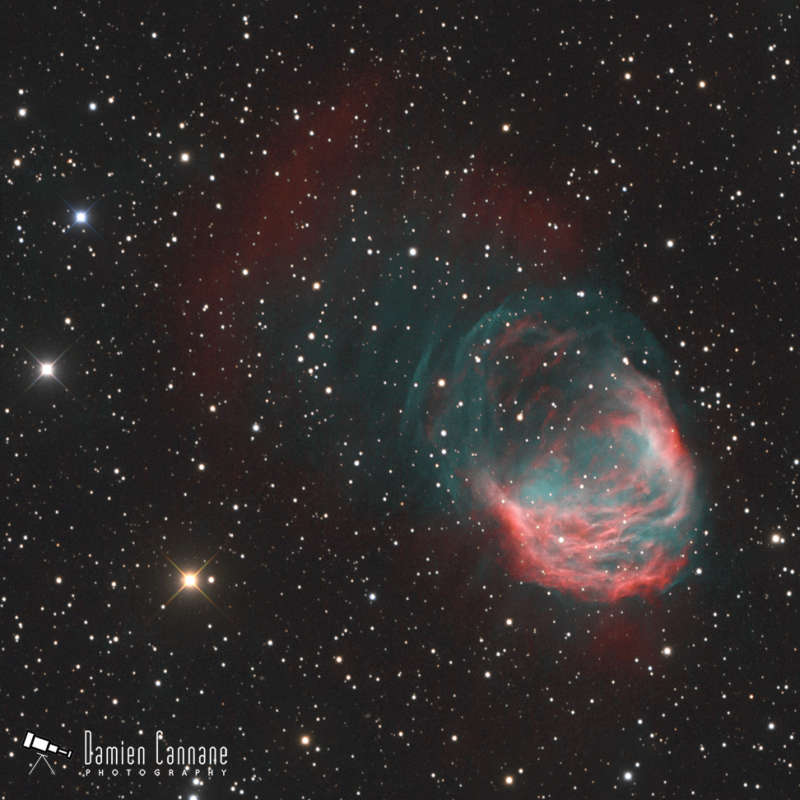 |
Астронет: Астрономическая картинка дня Туманность Медуза http://variable-stars.ru/db/msg/1822834/eng |
Credit & Copyright: Damien Cannane
Explanation:
Braided and serpentine filaments of glowing gas
suggest this nebula's popular name, The Medusa Nebula.
Also known as Abell 21, this Medusa is an old
planetary nebula
some 1,500 light-years away in the constellation Gemini.
Like its mythological
namesake, the nebula is associated with a dramatic transformation.
The planetary nebula
phase represents a final stage in
the evolution
of low mass stars like the sun as they transform themselves from
red giants
to hot white dwarf
stars and in the process shrug off their outer layers.
Ultraviolet
radiation
from the hot star powers the nebular glow.
The Medusa's transforming star is the faint one near the center
of the overall bright crescent shape.
In this deep telescopic view,
fainter filaments clearly extend
above and left of the bright crescent region.
The Medusa Nebula is estimated to be over
4 light-years
across.
Authors & editors:
Robert Nemiroff
(MTU) &
Jerry Bonnell
(USRA)
NASA Web Site Statements, Warnings,
and Disclaimers
NASA Official: Jay Norris.
Specific
rights apply.
A service of:
LHEA at
NASA /
GSFC
& Michigan Tech. U.
